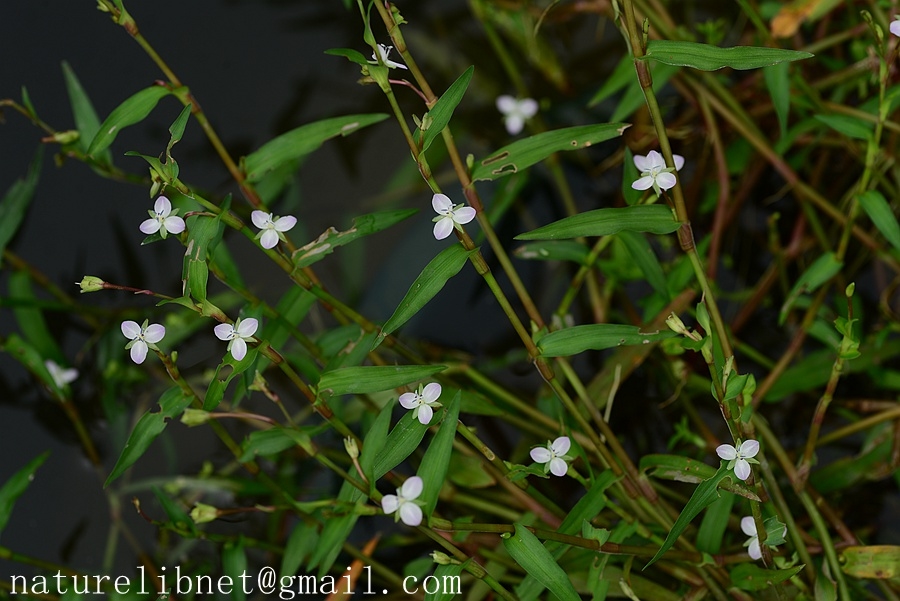- Scientific Name: Murdannia triquetra (Wallich ex C. B. Clarke) Brückner
- Ref: Engler & Prantl, Nat. Pflanzenfam., ed. 2. 15a: 173. 1930.
- Synonyms: Aneilema triquetrum Wallich ex C. B. Clarke, Commelyn. Cyrtandr. Bengal. 31, t. 19. 1874; A. nutans H. Léveillé
- Chinese Common Name: 水竹叶 shuǐzhúyè
- Family: Commelinaceae
- Genus: Murdannia
- Distribution: By rice fields or wet places; near sea level to 1600 m. C and S Anhui, W Fujian (Liancheng Xian), Guangdong, Guangxi, Guizhou, Hainan, S Henan (Jigong Shan), Hubei, Hunan, S Jiangsu (Suzhou Shi), Jiangxi, SW Shaanxi (Nanzheng Xian), Sichuan, Taiwan, S and W Yunnan, N Zhejiang (Hangzhou Shi, Changhua) [India, Laos, Myanmar, Thailand, Vietnam].
- Photo: 10/02/2017
Herbs perennial. Roots fibrous. Rhizomes horizontal, elongate. Stems creeping proximally, ascending distally, branched, to 40 cm; internodes ca. 8 cm, with a line of dense, white hairs. Leaves sessile; leaf sheath with a line of hairs on 1 side; leaf blade spreading or slightly folded, linear-lanceolate or linear-elliptic, 2--6 cm × 5--8 mm, ciliate only in proximal part, apex obtuse, abruptly narrowed into acuminate tip. Cincinni terminal and axillary, usually 1-flowered; peduncle 1--4 cm (terminal ones longer), with linear bract at middle, sometimes with a flower in axil of bract; pedicels 1--2 cm. Sepals narrowly oblong, 4--6 mm. Petals pink, purple-red, or blue-purple, obovate. Fertile stamens 3; filaments densely bearded; staminodes 3; antherodes sagittate. Capsule ovoid-globose, trigonous, 5--7 × 3--4 mm, obtuse or acute at both ends. Seeds (1--)3 per valve, uniseriate, reddish gray, not flattened. Fl. Sep--Oct (also May in Yunnan), fr. Oct--Nov.(Flora of China)
